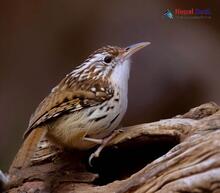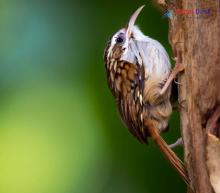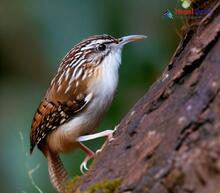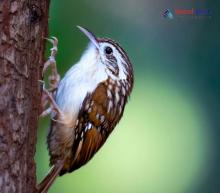Nestled within the breathtaking landscapes of Nepal, the bird genus Certhia has long captivated ornithologists and bird enthusiasts alike. These remarkable creatures, commonly known as treecreepers, display a unique set of characteristics that sets them apart from other bird species. Here, we will delve into the captivating world of Certhia, exploring its intriguing traits and highlighting its importance within Nepal's rich biodiversity.
Adapted for Life in the Trees
One of the key features that distinguish treecreepers from other birds is their incredible adaptation to life in dense forests. With their elongated, slender bodies and unique curved bills, Certhia species are specially equipped to navigate tree trunks and extract insects from cracks and crevices. Their stiff tails provide added support as they creep upward in a spiral motion, enabling them to cover every inch of tree bark in search of a meal.
Diversity Within the Genus
While all treecreepers belong to the same genus, there is considerable diversity among species found in Nepal. Some common examples include the Brown-throated Treecreeper (Certhia discolor) and the Rusty-flanked Treecreeper (Certhia nipalensis). Each species exhibits subtle differences in plumage patterns, vocalizations, and habitat preferences, making it a fascinating subject for research and observation.
Habitats and Distribution
The Certhia genus can be found across various habitats throughout Nepal—including subtropical forests, temperate woodlands, and montane regions. These birds thrive at varying elevations and are known to inhabit areas ranging from 900 meters up to an impressive 3,600 meters above sea level. Preferring dense foliage for cover and protection from predators, these elusive creatures can often be spotted in mixed-species feeding flocks.
Conservation Concerns and Future Research
Although Certhia species are not currently listed as endangered, habitat loss due to deforestation and climate change poses a significant threat to their continued existence. Increased research and monitoring efforts are critical to understanding the population dynamics, range, and distribution of these fascinating birds. By raising awareness about the stunning diversity of Nepal's avifauna, we can help ensure that future generations have the opportunity to marvel at the unique beauty of Certhia treecreepers.
In conclusion, the bird genus Certhia offers a captivating glimpse into the diverse world of Nepalese avian life. As you find yourself exploring the rich landscapes of Nepal, keep an eye out for these remarkable creatures—a sighting of a treecreeper is sure to leave a lasting impression on any nature enthusiast. By acknowledging their incredible adaptations and promoting conservation efforts, we can celebrate and protect these fascinating birds for years to come.




